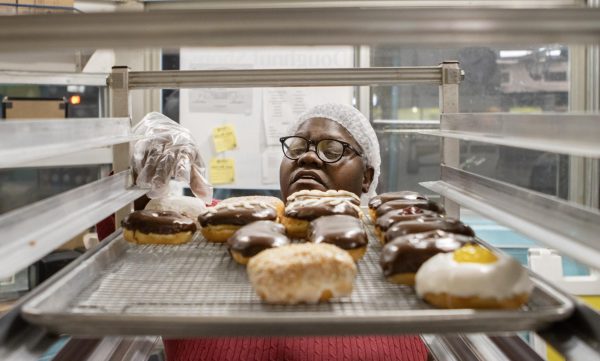Sizes shrinking confidence
It has been said that Americans live in a super-sized culture.
Unlike other countries, where people value moderation, Americans have a love affair with super-sized French fries and jumbo slurpies.
I know this because I am one of these Americans.
However, as the size of the average person has gotten larger, another part of our culture seems to get continuously smaller — the clothes.
While the majority of Americans are overweight, clothing sizes seem to be on a diet.
Maybe people in the clothing industry have spent too much time around the tall, thin models who grace the pages of magazines and not enough time at the mall where people struggle to find their size in a sea of extra smalls and size 2s.
It is frustrating to shop at stores whose clothes are targeted to the college-age group. While browsing the t-shirts at Abercrombie and Fitch, I have to wonder if they were mistakenly shrunk in a giant dryer on the way to the store from the factory or if maybe I stumbled into the children’s store by mistake.
But that is the reality of most of our Generation X clothing stores. They perpetuate our own insecurities by selling miniaturized clothes.
I often find myself commiserating with other women in the dressing room, “Is this a medium? Seriously? I must have gained weight.”
It is difficult enough for young women to be secure about the way they look or how much they weigh without being reminded every time they go shopping that they are still not thin enough to fit the norms the clothing industry has set forward.
Despite the fact the average woman wears a size 14, most of these stores do not even sell any clothing that is larger than a size 12.
Not only are the stores consciously excluding half of their possible customer base, but they also are sending out the message that being larger than waif-size is unacceptable.
I find it difficult to believe the stores do not have enough room on their shelves to hold the larger sizes.
As a consolation prize to people who are not able to fit into these sizes, some stores are kind enough to offer larger sizes on their Web sites.
If anything, it seems like the clothing industry has taken on its own form of elitist discrimination by only offering clothing in sizes that are suitable for thin people.
It is unfair to completely exclude one group of people from shopping at a store because they do not fit into the label’s young and thin image. People should not be discriminated against on the basis of their size, just as they shouldn’t for their race or religion.
The clothing industry should consider what repercussions these actions have on the self-esteem of the young people who shop in their stores.
People who wear a size bigger than a shrunken size large have the right to shop at the same stores as everyone else.
Maybe the clothing industry could take a cue from McDonald’s and super-size some of those clothes.










































